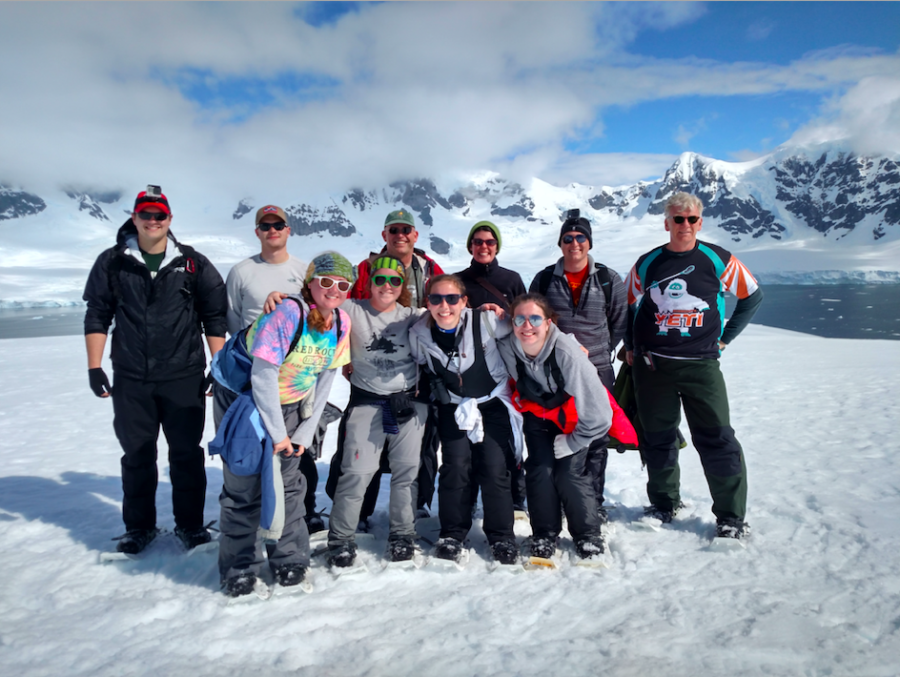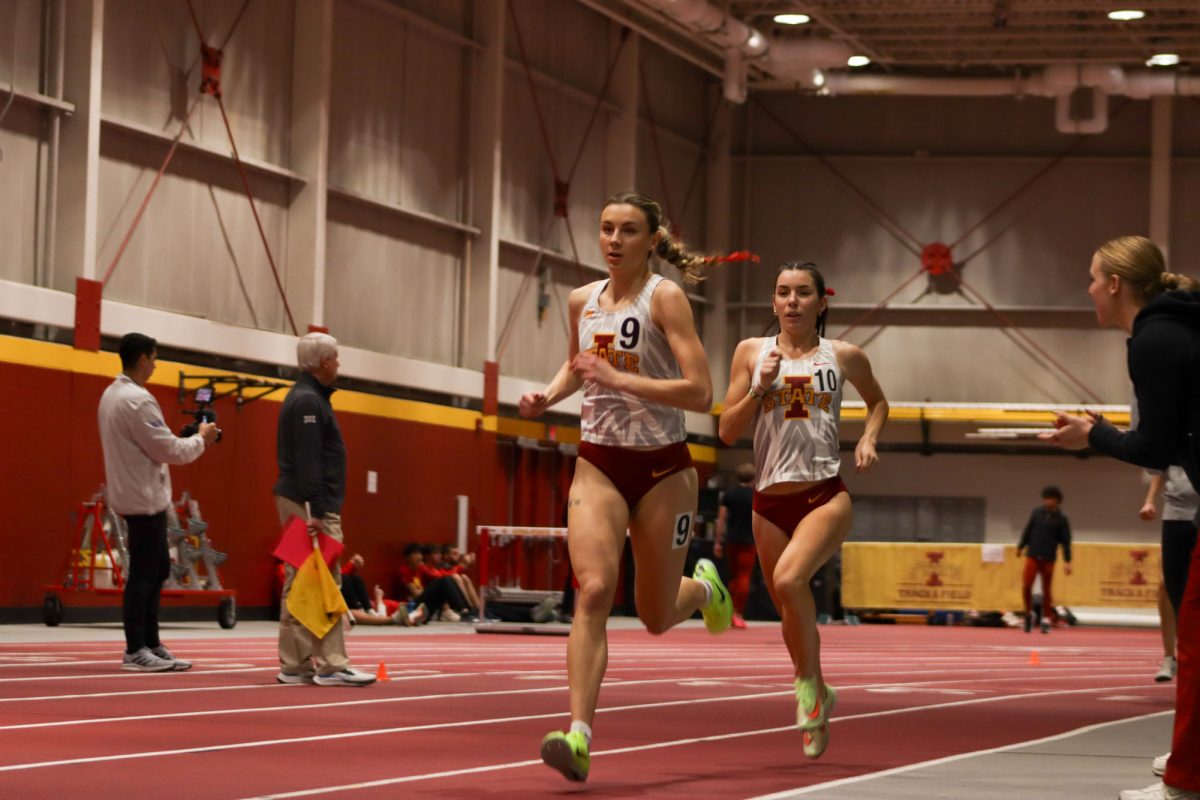Students set sail for snowy Antarctica study abroad
December 6, 2019
Iowa State students will get the chance to learn about the environment and wildlife of the coldest continent on Earth, Antarctica, as part of a study abroad program.
Seven students and three staff members will set sail to Antarctica Jan. 4 through 18. The trip is offered through the College of Agriculture and Life Sciences.
Shelley Taylor is the director of the College of Agriculture and Life Sciences Study Abroad Office and assistant director of agriculture and life sciences administration. Taylor said students will be exposed to all kinds of new surroundings compared to Iowa.
“Students get an exposure to a lot of different topics on this particular trip,” Taylor said. “The name of this trip is ‘Natural History of Antarctica,’ which includes the flora and fauna. So [students will experience] the wildlife and natural environment of Antarctica.”
While this trip is through the College of Agriculture and Life Sciences, some may wonder what Antarctica has to offer when it comes to agriculture.
Jodi Cornell, graduate political science student, is a program coordinator in the department of agriculture and life sciences administration. Cornell said it’s a different aspect of agriculture to be experienced.
“Of course, they don’t have crop farming or anything like that,” Cornell said. “There won’t be cows or anything in Antarctica. The type of wildlife they see while they are there are several types of birds, as well as whales and seals, and of course penguins.”
Stephen Dinsmore, department chair of entomology, is one of the professors going on the study abroad trip to Antarctica. He is an associate professor in the department of natural resource ecology and management and specializes in ornithology — the study of birds.
“I love the sea birds; I’m a bird person,” Dinsmore said. “I really like the large mammals, like some of the seals, and we saw a lot of orcas on the last trip. It was really cool to see those as well.”
This will be Dinsmore’s third time traveling to Antarctica, along with Julie Blanchong, who is also an associate professor in the department of natural resource ecology and management. Blanchong’s specialty is mammalogy, which is the study of mammals.
“The two of us, we have expertise in vertebrates,” Dinsmore said. “Those two expertises play really well because you see quite a few mammals and quite a few birds that are unique.”
Blanchong and Dinsmore said it is exciting to witness the wildlife of Antarctica and emphasized how captivating the landscape is.
“It’s hard to explain — the pictures that you see don’t really do it justice,” Blanchong said. “Everything is immense in size. Big, big mountains. Big, big bodies of water. [It’s] very white and blue and shades of gray. It’s very, very different from anywhere I’ve ever been.”
Dinsmore agreed with Blanchong’s admiration of the environment of Antarctica.
“It’s a really pristine wilderness,” Dinsmore said. “It’s very quiet, you don’t see any other signs of people, of other human civilization, except in rare occasions. To me what’s most impressive is the immensity of the landscape. You can stand on the front of the boat and it’s 4 a.m. and you can do a circle around you and see 25 to 30 glaciers.”
The students will be staying on the boat, which Blanchong explained doesn’t get close to the land. Visitors have to embark on smaller rubber boats called zodiacs to reach land.
When transitioning from the boat to the zodiacs and then to the land, students have to take proper precautions to protect the environment.
“We minimize our impact on a real fragile environment,” Dinsmore said. “[We] wear certain boots that are dipped in a solvent before you exit the boat to try and sanitize them when you get on the zodiac. There’s a lot of attention to not introduce plant seeds or pathogens or anything like that. There are strict precautions.”
Students learn these precautions prior to their departure through a required course called “Natural History of Antarctica.” They are instructed by Blanchong and Dinsmore about the trip as well as the environment of the continent.
“Every week we meet and we talk about a lot of the history of the natural features of Antarctica,” Blanchong said. “Talking about what Antarctica is in terms of the continent, the geological history, the history and changes in animal and plant communities.”
Dinsmore said each student learns about a specific aspect of Antarctica. On the trip, the students have the opportunity to teach each other about their topic of expertise while experiencing it in real life.
“We have each student get to know something that relates to the course’s content,” Dinsmore said. “Maybe a creature or a plant or a particular expedition. They write a paper on it and then what’s really interesting is that we put them in a position of being the expert.”
Along with wildlife and vast landscapes, another thing students are prepared to encounter is seasickness. Blanchong said since the trip is not tropical like many other study abroad programs, there are not as many diseases to prepare for. Nonetheless, students are warned of the harsh conditions of the water they must travel through.
“We leave from the tip of South America and have to cross a body of water called the Drake Passage,” Dinsmore said. “It can be terribly, terribly rough sometimes. The water will come up over the boat.”
Once students have made it through the Drake Passage, though, they are greeted by calm conditions and considerably mild temperatures. It is summertime in Antarctica during the trip and the weather is comparable to winter in Iowa.
“Because it’s the summer, it will be in the mid-thirties,” Blanchong said. “We will be nice and warm while everybody [in Iowa] is freezing. Whatever you would wear to be outside around Ames, you would be more than prepared to be [in Antarctica].”
Students will be sharing the boat with other tourists, too. Blanchong said people of many ages and countries accompany the group on their trip.
“Some of the students really start to get to know these people from different places,” Blanchong said. “That’s kind of fun to watch and be a part of.”
Along with meeting new people, Blanchong emphasized how momentous traveling to a place like Antarctica can be for students. She said she is grateful Iowa State supports study abroad trips like this one.
“It’s an opportunity for students to see places that they might not otherwise have a chance to see,” Blanchong said. “Antarctica in particular — where we are going in particular — isn’t going to be like this forever. It’s an opportunity to experience a place that is changing rapidly and get to appreciate it.”
Dinsmore agreed with Blanchong in regard to the fact they are both thankful for an opportunity like this. He also said it’s worthwhile to take students to Antarctica, especially when they finally get to experience the environment they have learned so much about.
“I feel like I’m really fortunate to go to a place like [this],” Dinsmore said. “Not many people on the planet get to go to Antarctica. I really like seeing the reactions of students. It’s so radically different than anything they’ve ever seen before.”







